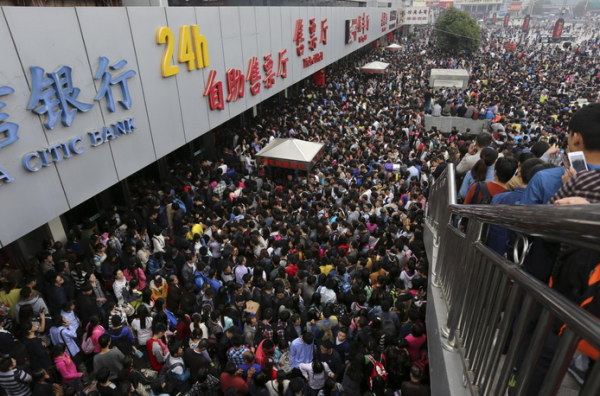China's demography is undergoing an alarming shift, on account of an ageing population and sharp drops in its labor force.
China accounts for world's largest population; however, most of its population as of today is aged above 65 years old. Reuters reported that by 2050, one in every three Chinese shall be over 60 years old.
According to United Nations, out of 1.37 billion people in China, 131 million are over 65 years old. This number is expected to jump to 243 million by 2030, which shall be 85 percent of China's population.
China Real Time, a blog under Wall Street Journal, mentions that an ageing demography posts several economic and social challenges for China. Most important one being that China is now faced with a shrinking work force. According to figures by China's National Bureau of Statistics, number of workers between 16 to 59 years of age declined by 4.87 million last year and by 3.71 million in 2014.
A drop in labor force holds two adverse implications. First, it will drive up labor costs and cut down on China's cost competitive manufacturing sector. Second, existing work force shall tend to push for higher wages and benefits. Both of these consequences herald tougher times for China, which is already in the midst of an economic slow-down.
WSJ blog also reported a decline in China's migrant workers.
Demographers attribute present ageing problem to China's one-child policy initiated in 1970's. In light of these demographic challenges, China in October 2015 scrapped this policy and has allowed couples to have two children.
Reuters cited critics mentioning that relaxation of one-child policy may be "too little, too late" to salvage the repercussions on China's demography. The rules had earlier been relaxed in 2013, but very few couples opted to have more than one child, citing costs of bringing up children in an increasingly expensive country.
Check the documentary below on why China's one-child policy failed:



